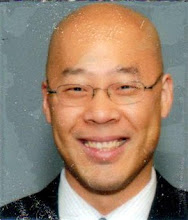Torts (2005 Fall)
I. INTENTIONAL TORTS
-
Act Requirement [Sullivan]
Personal Harm
- Battery
- Elements
- Act
- Intent to cause harmful or offensive contact with the person of another or a third person, or apprehension of immediate harmful or offensive contact
- Harmful or offensive contact results
- Defense – Privilege by consent
- It is sufficient only to intend offensive contact, or contact that does not suit social propriety [Vosburg, White]
- There must be substantial certainty that harmful or offensive contact would result. [Garrett]
- An insane person can form intent and be held liable. [McGuire v. Almy]
- Extension of body includes cane. [Respublica v. De Longchamps]
- Transferred intent applicable
- Elements
- Assault
- Elements
- Act
- Intent to cause apprehension of contact
- Plaintiff has actual apprehension of imminent contact
- Conditional threates – A neighbor who says he’s going to come over and “take care” of you if you don’t shut up your dog is not liable for assault because the threat is not one of imminent action.
- Threat of violence – “Mere words” is not actionable.
- Transferred intent applicable
- Elements
- Intentional Infliction of Emotional Distress (IIED)
- Elements
- Intent to inflict emotional distress, or knew or should have known that emotional distress was likely result.
- Conduct “extreme and outrageous”; “beyond all possible bounds of decency”; and “utterly intolerable in a civilized community”.
- Actions were cause of distress.
- Emotional distress “severe”; “no reasonable man could be expected to endure it.”
- Defense - Public figures must prove more than “outrageousness”, and that the act contains a “false statement of fact”
- Physical harm not necessary [Agis v. Howard Johnson]
- Jury determines if frivolous
- Transferred intent applicable for the following when there is severe emotional distress:
- Plaintiff is member of target’s immediate family present at the time, regardless of bodily harm
- Plaintiff is any other person present at the time, if bodily harm results
- May piggyback on other intentional torts, such as battery or trespass, even if distress not severe
- Elements
- False Imprisonment
- Elements
- Defendant acts
- Defendant intend to confine
- Action results in confinement
- Plaintiff is aware of the confinement (some jurisdictions)
- Defenses – “Shopkeeper’s privilege”
- Reasonable belief
- Reasonable manner
- Reasonable amount of time
- Actual physical confinement is not required as long as there is an overbearing of the plaintiff's will [McCann v. Wal-Mart, Griffin v. Clark]
- Elements
- Stalking - California statute
- Pattern of conduct
- Intent
- Reasonable fear for self or immediate family
- One of:
- Credible threat and demand to cease and desist
- Violation of restraining order
Property Interests
- Trespass to Land
- Elements
- Affirmative act [Snow v. City of Columbia - no act, no liability]
- Intent to enter (knew with substantial certaininty)
- Actual entry
- Harm to land results (only necessary for damages)
- Defenses
- “Innocent” trespasser – mistake without gross negligence [Barnes v. Moore] not excused, but liability nominal
- Privilege for certain groups (such as state workers) providing assistance to people on the land. [State v. Shack]
- Martin test - Particulate pollution as trespass. [Borland v. Sanders]
- Elements
- Nuisance
- Elements - Same as Trespass to Land except:
- Intrusions are intangible
- No physical damage results
- If damages are awarded, payment acts as purchase of enjoyment of property – no further nuisance charges may be brought. [Boomer]
- “Coming to the Nuisance” – The fact that the plaintiff acquired or improved land after a nuisance came into being does not bar action but may be considered in determining whether the nuisance is actionable.
- Elements - Same as Trespass to Land except:
- Conversion and Trespass to Chattels
- Elements
- Act
- Intent to interfer with possession of personal property
- Actual damage
- Difference
- Conversion akinto theft
- Trespass to chattels deals with more modest interferences, such as interfering with use [Hamidi]
- Mistake not excused.
- Invoked to create new types of property [Moore v. Regents]
- Elements


6 comments:
I am in the Paralegal studies prigram at Phoenix College, and I must say this has helped me a lot.
Robin
Glad to have helped!
thanks so much. i am his class this semester and our midterm is in a couple weeks. it will be great to have this to compare with. I also am taking Hulls class so i your contracts outline will come in handy also. Thank you so much.
Good luck, I hope it helped!
In principle, a good happen, support the views of the author
Sr you are outstanding! this helped me a lot with my Civil Litigation class!!!
Post a Comment